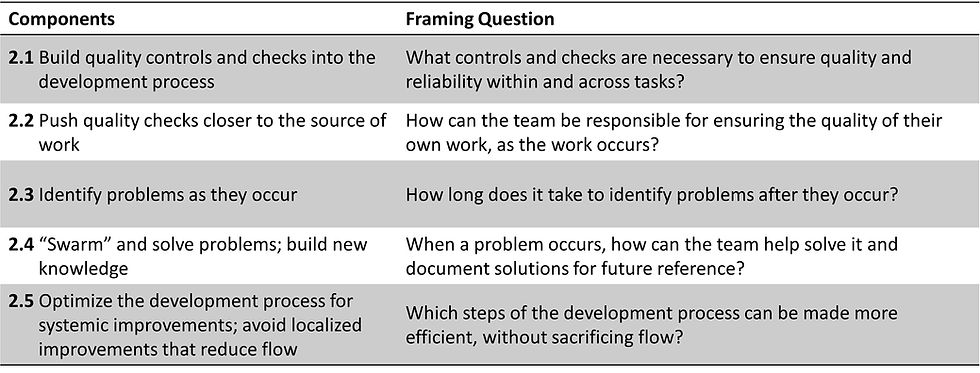The Agile Guideline Development Framework is a program management framework that can be used by guideline development organizations to identify, create, and refine the structures & systems needed to scale implementation of a Living Practice Guidelines framework (1) across an entire portfolio of guidelines.
The purpose of the framework is not to speed up guideline development, but rather to identify and remove the phenomena that slow it down.

The Framework, adapted from software's DevOps(2), is composed of three Mechanisms: principles which will help guideline developing organizations scale a Living Practice Guidelines framework. The Mechanisms are composed of multiple components and therefore serve as an engineering "mechanism"; they function as a system of parts working together to achieve an outcome,
Mechanism 1: Establish “flow” in the development process
The objective of Mechanism 1 is to optimize the development process required to turn a PICO question into a clinical practice recommendation, making the recommendation available for use as quickly as possible. The development process has been optimized when work “flows” through it as smoothly and quickly as possible, with minimal interruptions, waiting, or repeating tasks, and without compromising quality and reliability. Perfect flow (in which work never stops and the development process happens as fast as resources allow) is a theoretical ideal; guideline programs should aim for continuous improvements in flow.

Mechanism 2: Simplify and automate feedback & feedforward loops
The objective of Mechanism 2 is to optimize the quality and reliability of work while maintaining or improving flow of the development process. Quality and reliability are optimized when all necessary feedback and feedforward loops are included in the development process, without reducing flow, and their thoroughness balances speed and quality in an optimal manner. By simplifying and automating feedback and feedforward loops, flow of the guideline development process can be improved facilitating faster delivery of recommendations.

Mechanism 3: Establish a culture of continual learning and experimentation
The objective of Mechanism 3 is to integrate continuous improvement practices into daily guideline development work. Continuous improvement is integrated into daily work when experimentation and intentional learning is an explicit and implicit expectation among the guideline development team(s) and all levels of organizational leadership. By creating a culture of learning and experimentation, flow of the guideline development process can be continuously improved.

Guideline developing organizations that want to scale living guideline development across their entire portfolio can use this framework to inform how they can update their structures & systems for rapid and continuous delivery of timely and relevant guidelines.
References:
El Mikati et al. A Framework for the Development of Living Practice Guidelines in Health Care. Ann Intern Med. doi:10.7326/M22-0514
Kim et al. The DevOps Handbook. 2nd edition.

Comments